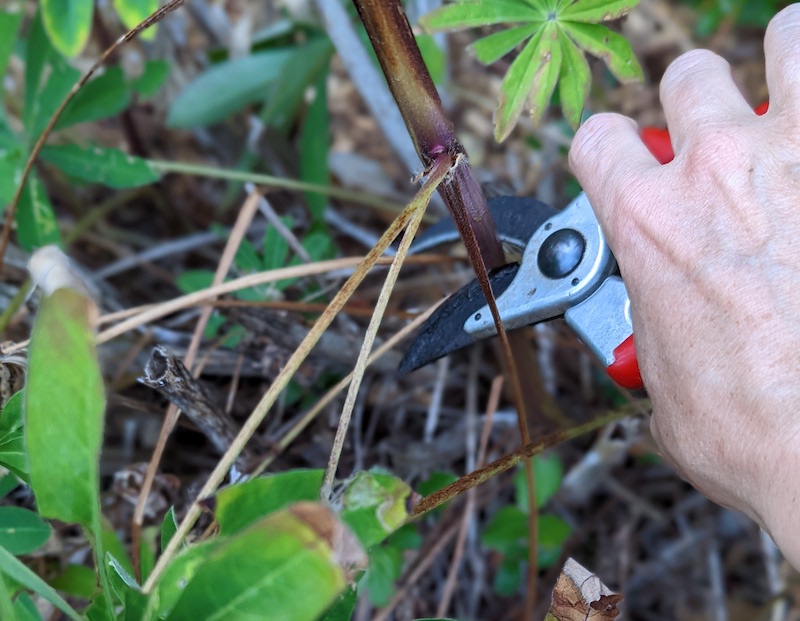Lupines are hardy perennials that grow well in a wide variety of conditions. This low-maintenance plant goes dormant during the winter, with the top growth dying entirely to the ground. In the fall, only a few chores are necessary to ensure that Lupine gets through a cold and snowy winter successfully.

Protecting Lupine in Winter
Lupine will begin to die back once the flower spikes have turned to seed heads. During the fall, the dying top growth and any remaining foliage should be cut back to within 1-2 inches of the ground. The lower foliage will start to turn brown while the root system begins the process of hardening off and preparing for dormancy.
Fall is an excellent time to mulch the roots with a heavy layer of straw or shredded leaves to add insulation through the winter. Place something to mark your Lupine’s location, so that it is not disturbed by accident in the spring.
Cutting Back Lupine For Winter
As the plant prepares for dormancy, a heavy layer of mulch should be placed around the growth crown for insulation through the winter. Lightweight mulch such as shredded leaves, arborist chips, and straw will help trap air in layers.

Lupine Winter Care in Pots
Potted Lupines should survive winter as long as they continue to have good drainage. The roots are closer to the cold weather in a pot and appreciate being insulated with burlap or garden fleeces wrapped around the outside. If possible, move Lupine pots to a sheltered location, out of the path of storms and wind. If you garden in a milder winter zone, ensure the containers receive natural rainfall without being washed out during downpours.
Watering Lupine in Winter
Herbaceous perennials generally do not need supplemental watering after they have died back for the winter. Lupine will appreciate regular watering until the ground freezes in drier climates. After temperatures fall to the mid to lower 40’s F, all watering should stop. Once green shoots appear in the spring, watering will need to be monitored if there is no natural rainfall.
Growing Lupine Indoors
Lupine does not grow well as a houseplant. It needs a period of cold weather dormancy to prepare for the next growing season. Seeds that are started late in the summer or fall will need a sheltered location over the winter. Seedlings brought indoors will develop spindly growth unless a grow light is used.

Steps To Care For Lupine in Winter
Winter preparation of Lupine is easy and consists of a few important tasks before your Lupine rests for the winter.
Step 1 - Cut back top growth as it begins to naturally die back in the fall
Step 2 - Apply a thick layer of loose mulch over the entire area of the growth crown and root system
Step 3 - Mark the spot of your Lupine plant, so it will not be disturbed during spring clean-up or planting
Step 4 - Remove excess mulch from the newly sprouted shoots in the spring, so that the plant has enough light and air circulation
 |
Author Robbin Small - Published 8-24-2022 |
